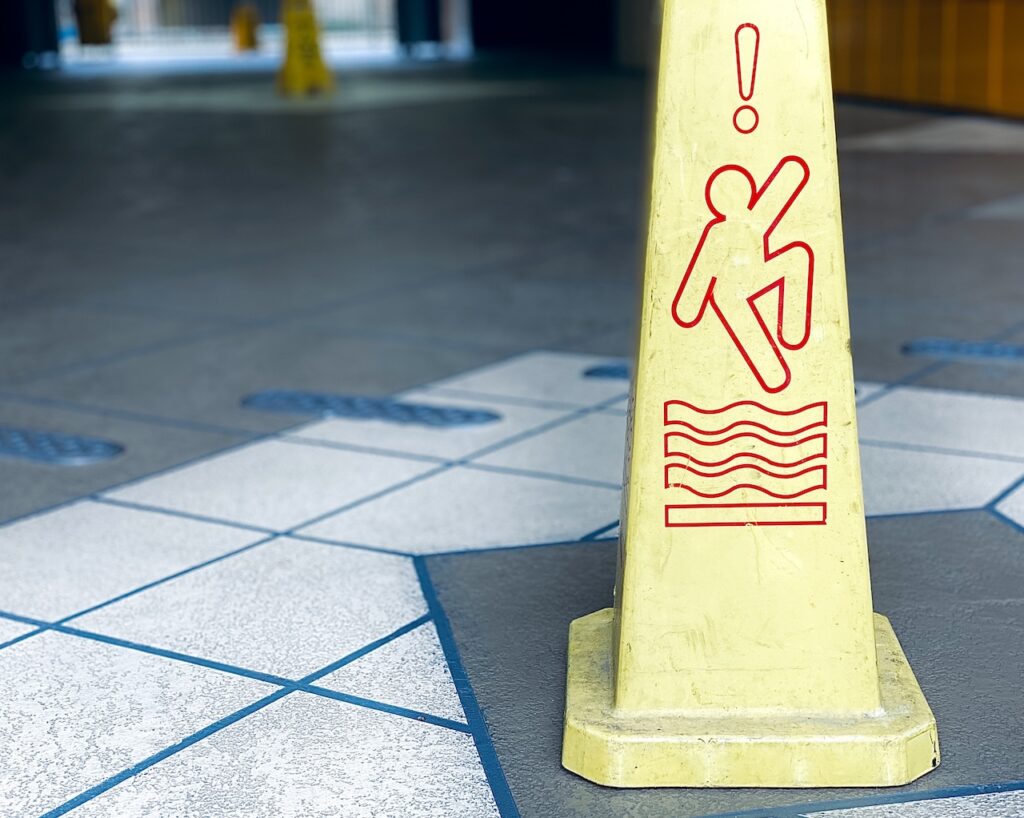A slip and fall may seem like a minor mishap—until you end up with serious injuries, lingering pain, unexpected downtime, mounting medical bills, and a complicated legal process. These accidents happen quickly, and it can be a challenge to navigate all of the aftermath alone.
We’re here to help with this guide to slip and fall injuries, including an overview of the most common types, what these injuries mean for you legally, and how a slip and fall accident lawyer can help in your recovery.
Common Slip and Fall Injuries
Slip and fall injuries can range from minor bumps and bruises to serious, life-altering conditions—whatever the case, it’s best to consult a slip and fall accident lawyer if you or someone you care about suffers these or any other injuries from a fall.
Sprains
Sprains occur when ligaments are stretched or torn, causing pain, swelling, and limited mobility in the affected joint. These injuries are common in wrists, ankles, and knees following a fall.
Broken Bones
Painful fractures in the wrists, hips, and arms are common after the impact of a fall and can lead to long-term mobility issues, depending on the severity of the break.
Soft Tissue Injuries
Damage to muscles, tendons, or ligaments can cause serious bruising, soreness, or inflammation. These injuries may not be as obvious directly after a fall, so it’s important to pay attention to how you’re feeling in the days after an incident.
Knee Injuries
Tears in the ACL or meniscus, dislocation, fractures, and sprains are all common after a fall and can require intense treatment and long recovery times.
Shoulder Displacement
A sudden fall can easily dislocate your shoulder, causing severe pain, restricted movement, and sometimes nerve or tissue damage.
Head or Brain Damage
Concussions or other traumatic brain injuries can result from contact with hard surfaces or even just the jolt of the fall.
Neck, Back, and Spinal Cord Complications
Injuries to the neck or spine, including herniated discs or spinal cord damage, can cause chronic pain, reduced mobility, or even paralysis in extreme cases.
What Are the Legal Implications of These Injuries?
If you or someone you care about has suffered any of these injuries from a slip and fall incident on someone’s property, you may be able to recover compensation—everything depends on the conditions of the location of the incident and what was going on when the fall occurred.
For example, if there were wet floors or uneven surfaces without warning signs or poorly kept premises, the property owner could be held liable for any injuries. On the other hand, if the person who fell ignored warning signs, wasn’t paying attention, didn’t follow common safety procedures, etc., they may not be able to recover any compensation.
The best way to determine whether or not you have a case is to consult an experienced slip and fall accident lawyer. If they determine that the property owner could be at fault, they can help you collect evidence (including photographs, medical records, eye-witness accounts, and more), form a case, and navigate the complex legal process so you can focus on recovering.
Get Expert Insights on Your Case from PMP
Every slip and fall accident is different, from types of injuries to liable parties. With the help of PMP, you can seamlessly navigate these details while still focusing on your recovery. Our experience, expertise, and dedication to your case can’t be beaten, and we’re ready to fight for you. Reach out to discuss your case with a slip and fall accident lawyer.

